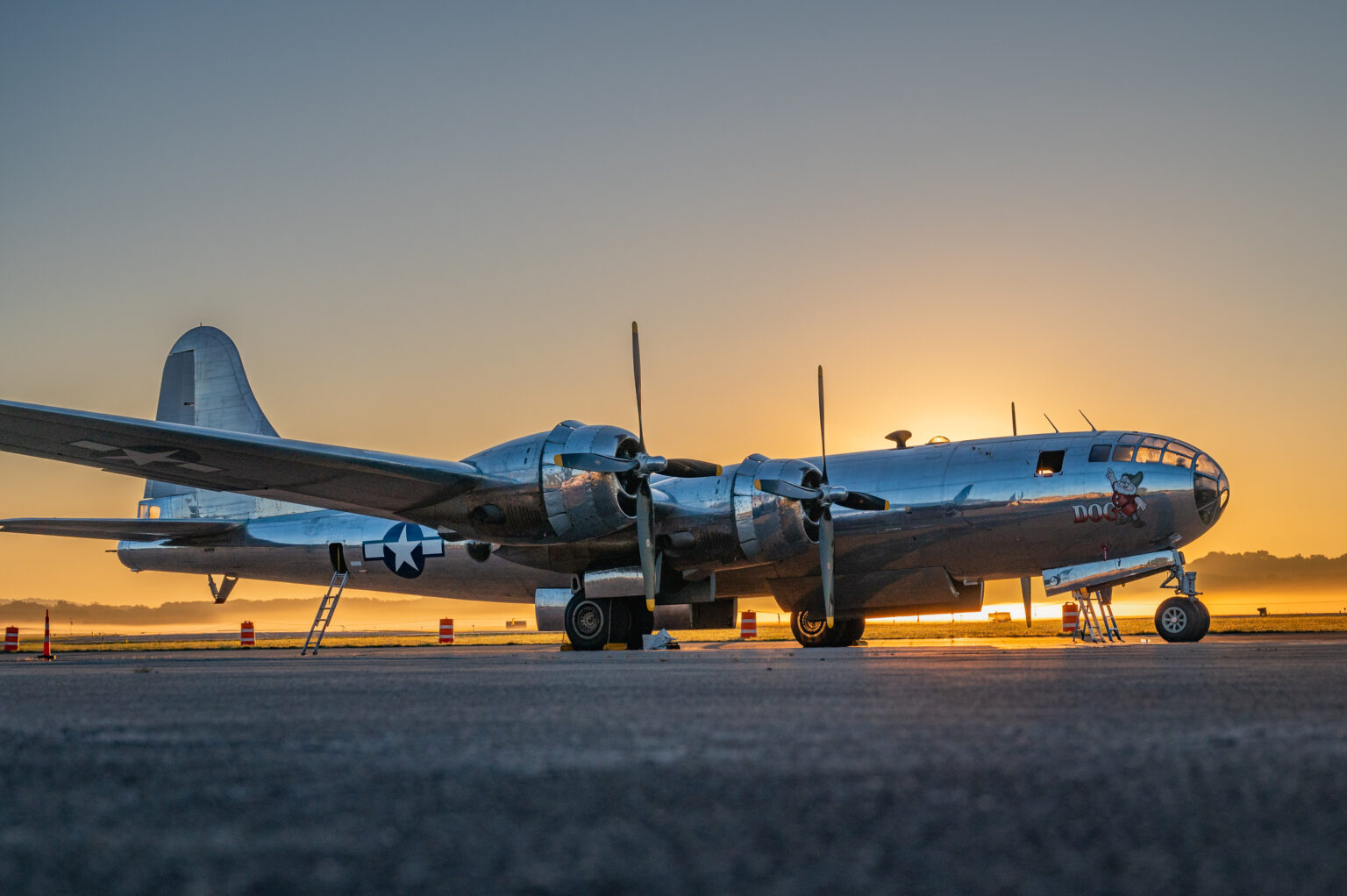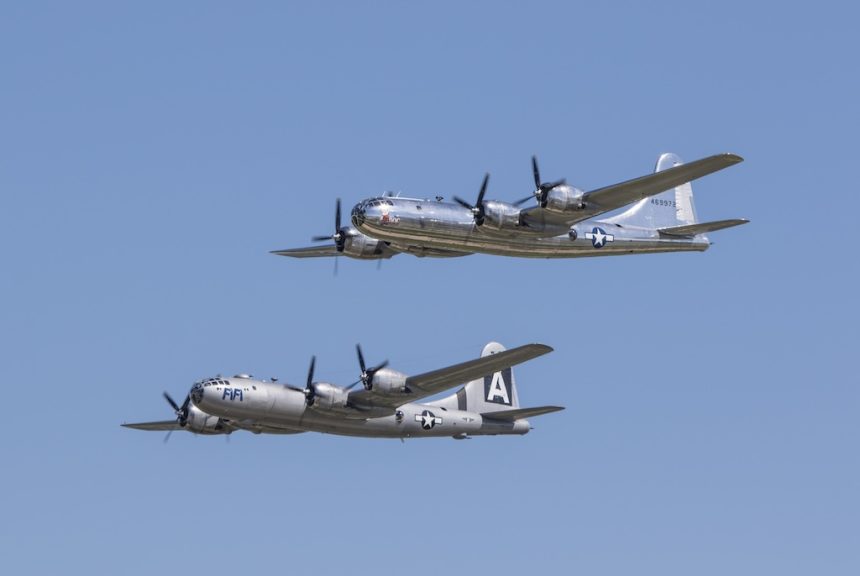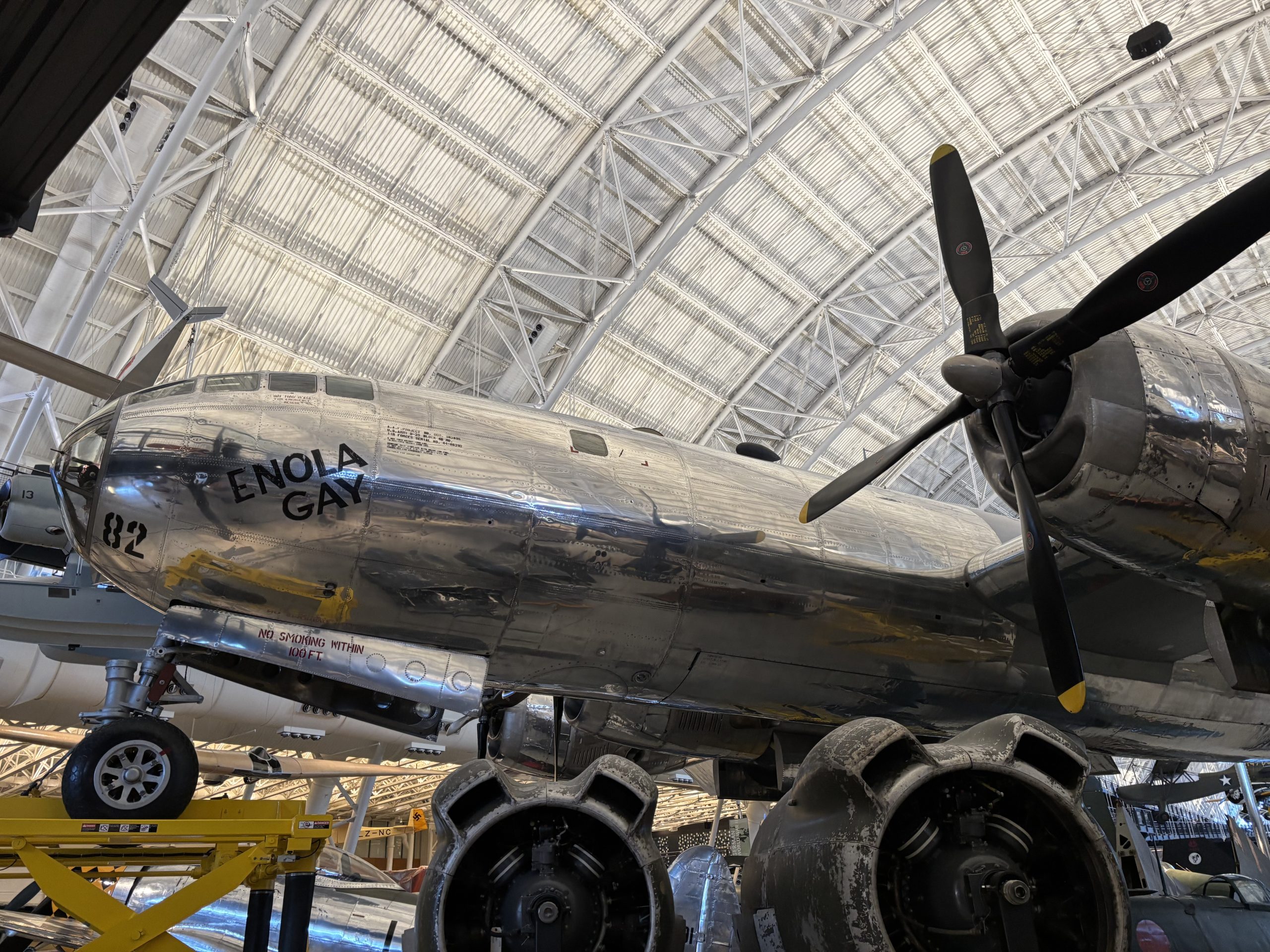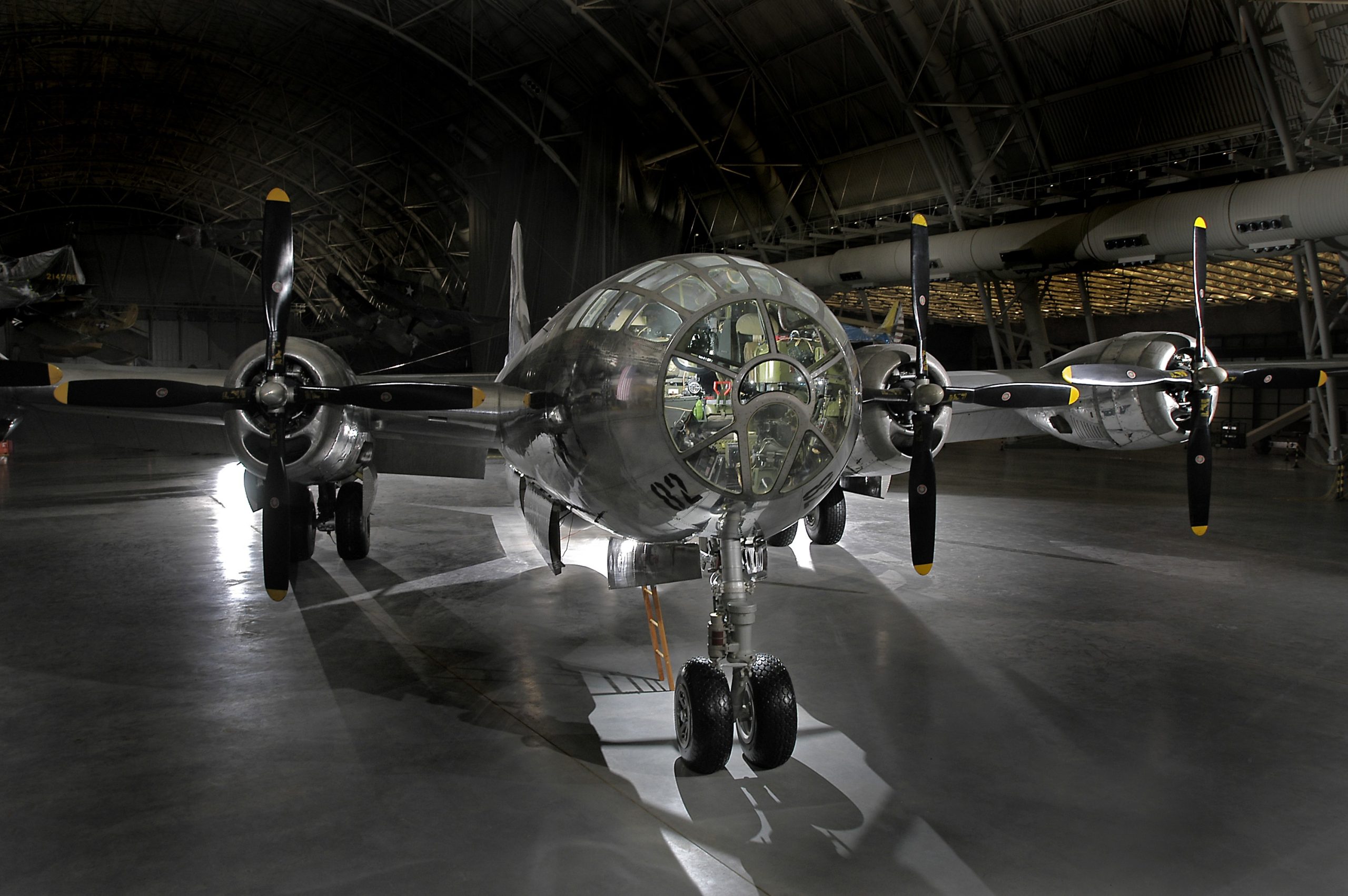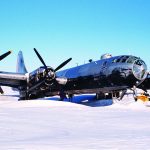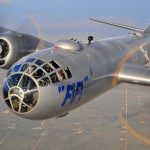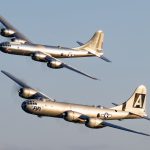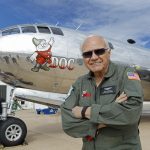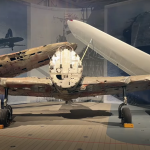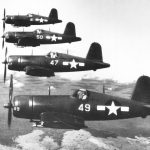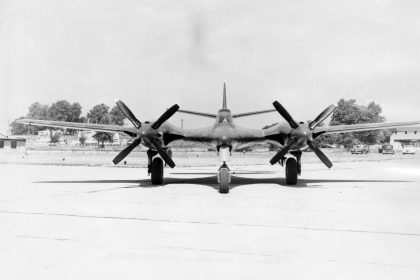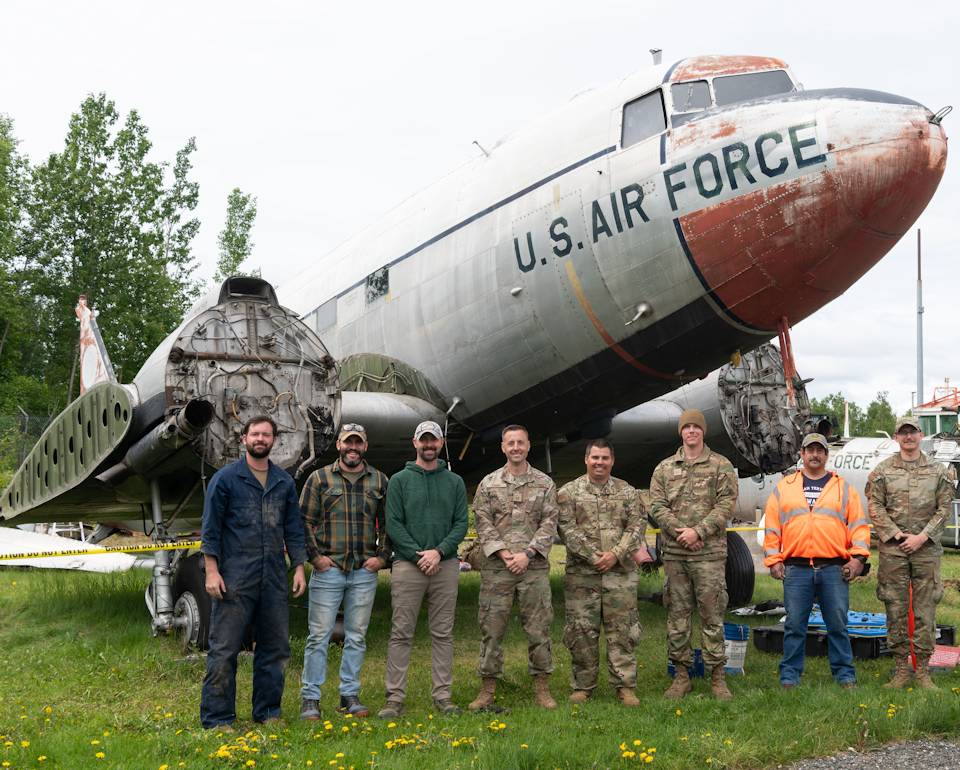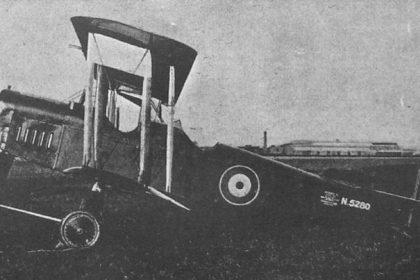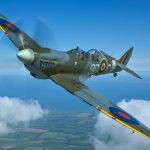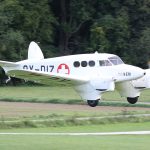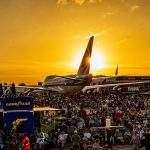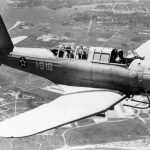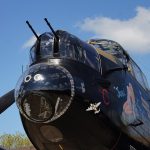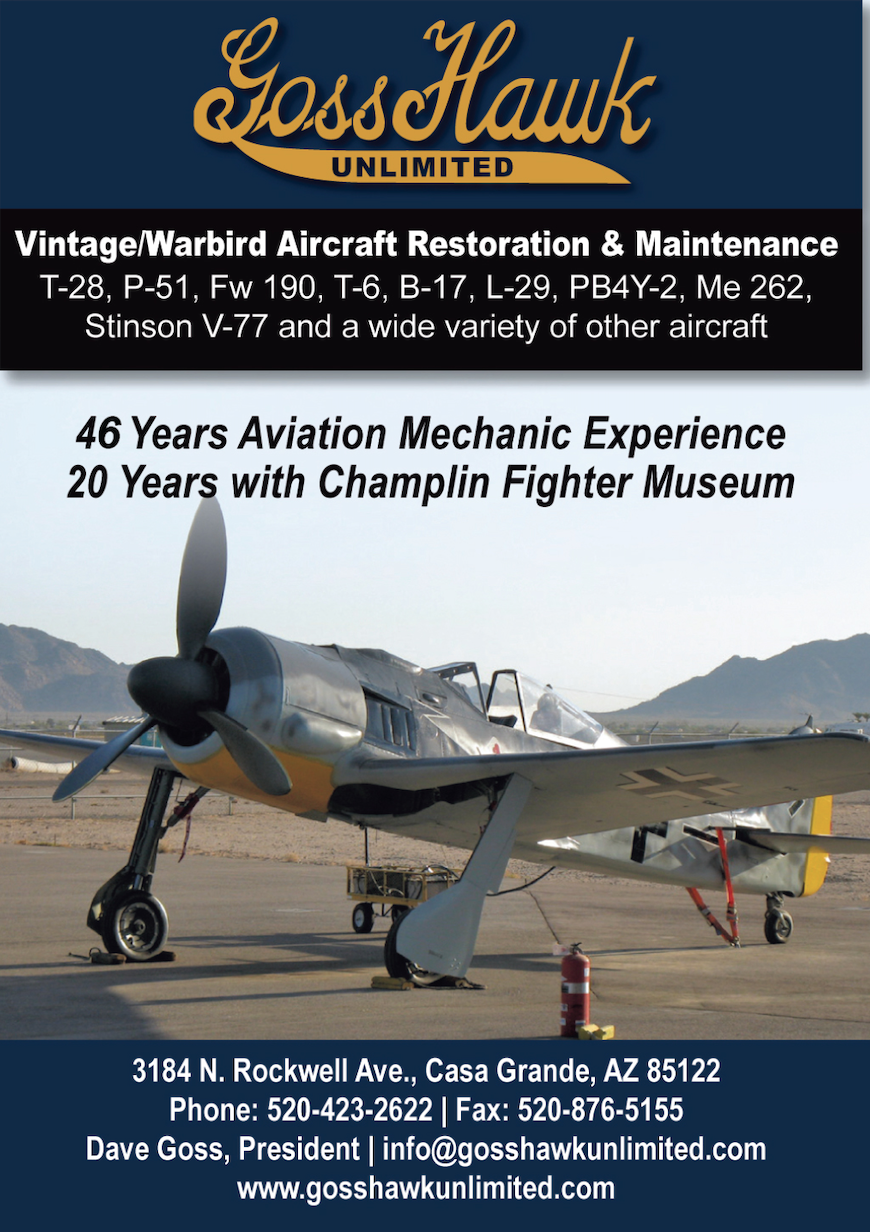by Cap Cordina
The Boeing B-29 Superfortress is perhaps one of the most famous military aircraft, and rightly so, partly for their impressive size and engineering as well as their crucial role in World War II and bringing the world into the atomic age by dropping atomic bombs on Hiroshima and Nagasaki in Japan, helping bring about the end of the war in the Pacific. The B-29 was a heavy bomber developed by the Boeing Company designed for high altitude bombing, although a number of them were redesigned for reconnaissance missions and trainers. Extra fuel tanks could even be added in the unused bomb bays, making Lucky Lady II ‘s 1949 nonstop round-world flight a possibility, taking 94 hours!

After WWII, the B-29s were taken back to the United States, and were disassembled and melted down. As time went on and newer aircraft were deployed, the remaining B-29s were retired, with a portion used as testing and target practice. These tests were conducted to explore better ways to protect new aircraft and crew by assessing the damage caused by chosen weapons. Despite their historical significance, the wildly admired B-29 Superfortresses are now rare. Out of the 3,970 built from 1943-1946, 26 remain in various degrees of restoration, with only two still flying today.
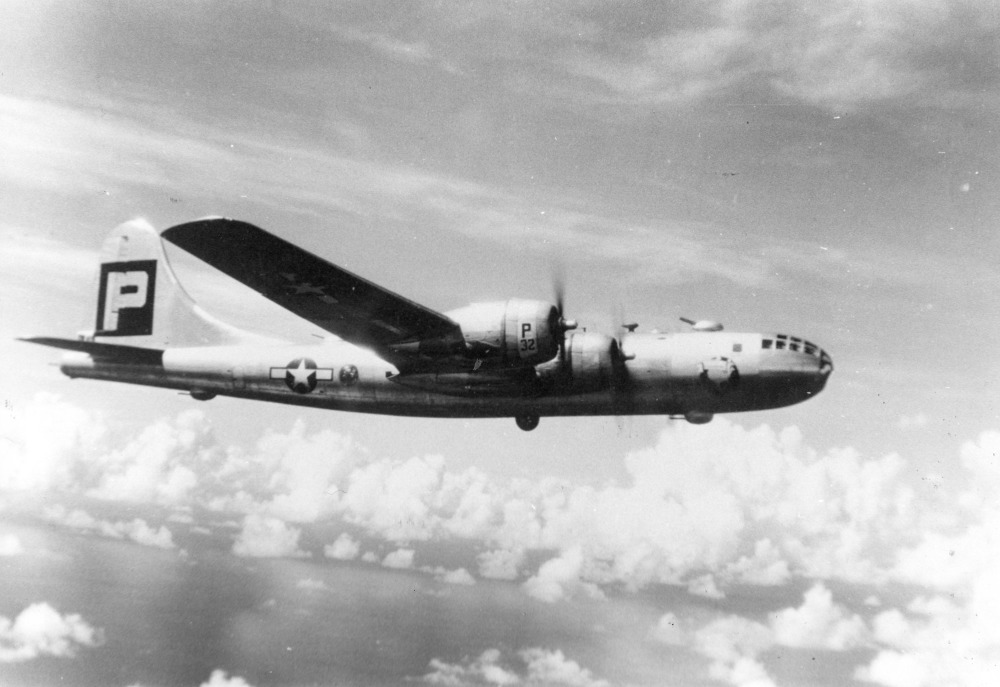
Indoor exhibits
Enola Gay is perhaps the most famous WWII aircraft in American history. In August 1945, Enola Gay, named after the pilot’s mother, became the first aircraft to drop an atomic bomb. The bomb targeted the city of Hiroshima in Japan. It was this bomb, along with the second targeting Nagasaki that are credited for ending the war in the Pacific. Enola Gay was restored in 1984 and moved to the National Air and Space Museum’s Steven F. Udvar-Hazy Center in Chantilly, Virginia in 2003 where it remains on display today.
Bockscar was the aircraft responsible for dropping the second atomic bomb on Nagasaki accompanied by fellow B-29s The Great Artiste and The Big Stink It was named after the captain Frederick C. Bock and can be seen at the National Museum of the U.S. Airforce at Wright-Patterson Air Force Base near Dayton, Ohio.
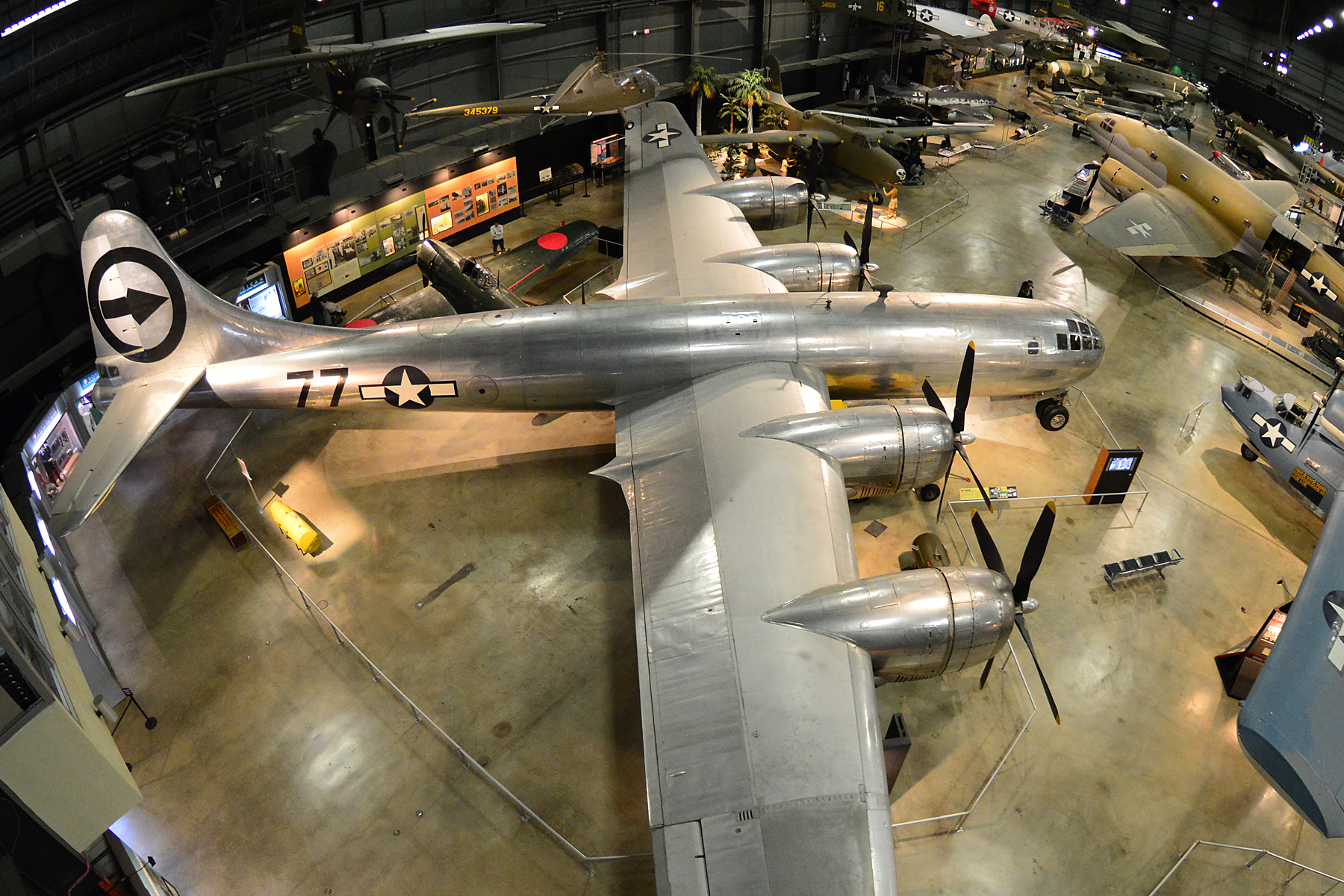
Outdoor exhibits
Raz’n Hell was built during the Korean war, flew around 50 missions, and returned to the US at the end of the war. It was then posted in China Lake, California to be used as a missile target. It was restored in 1980 and put on display at the Castle Air Museum in Atwater, California.
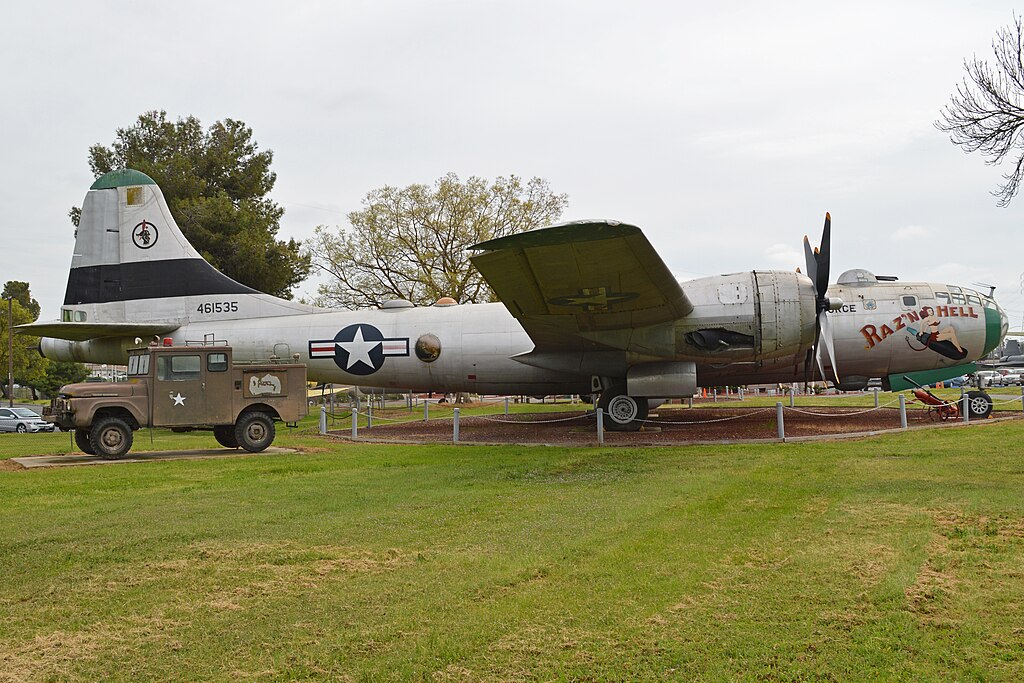
T Square 54 was turned into a KB-29 aerial refueling tanker after flying 27 missions and eventually ended up at China Lake, California after the war. Restorations began in 1987 and it was finally transferred to the Museum of Flight in Seattle, Washington.
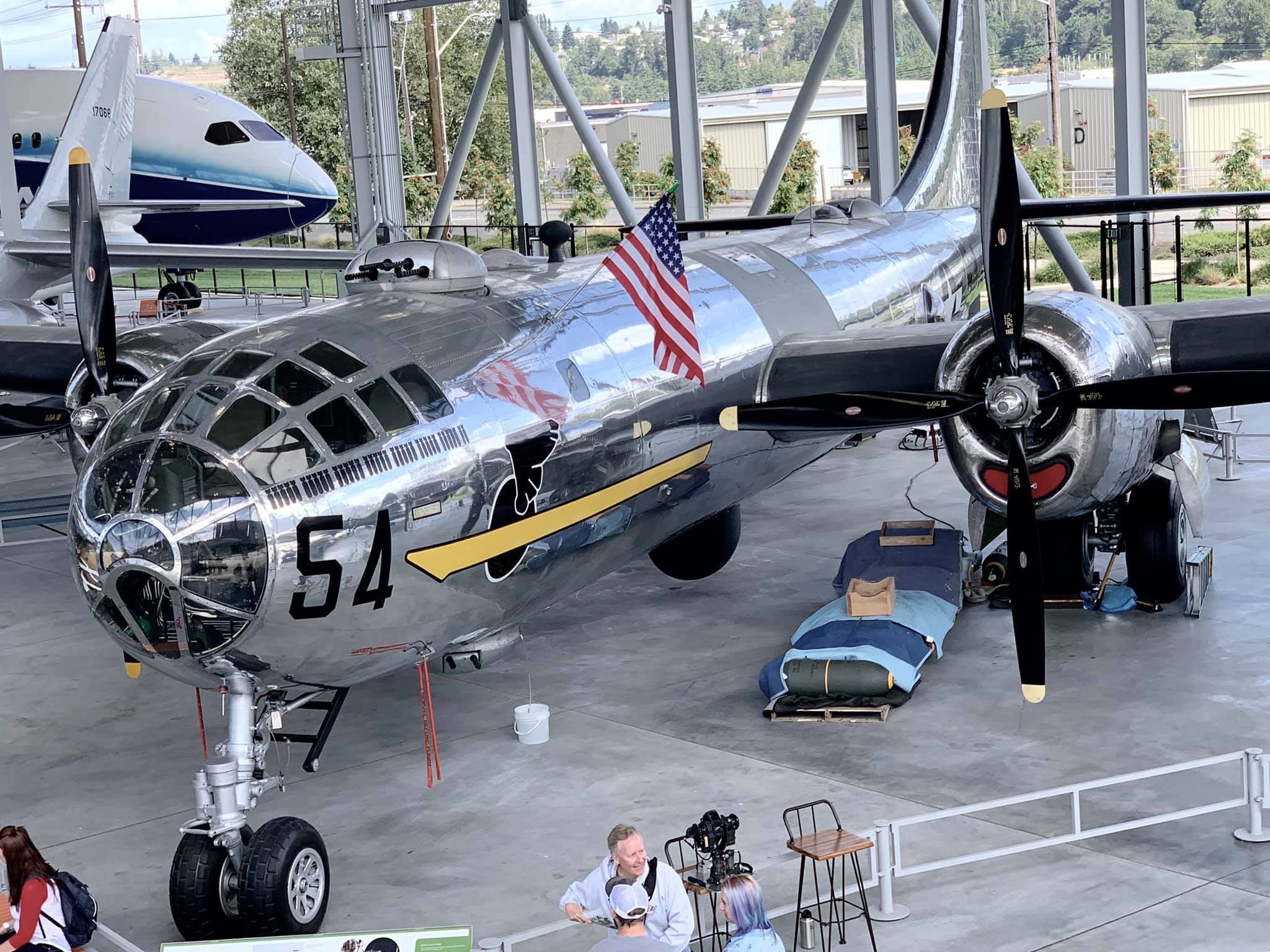
The Great Artiste, the original, assisted Bockscar on its mission to drop the second atomic bomb on Nagasaki, Japan. It was named after its bombardier’s talents and flew 12 training missions bombing Japanese Pacific islands and dropping pumpkin bombs. The Great Artiste was scrapped after running off the end of the runway at Goose Bay Air Base, Labrador. Another B-29 used during the Korean War was refurbished to depict The Great Artiste, and is located on the Whiteman Air Force Base but cannot be accessed without prior approval.
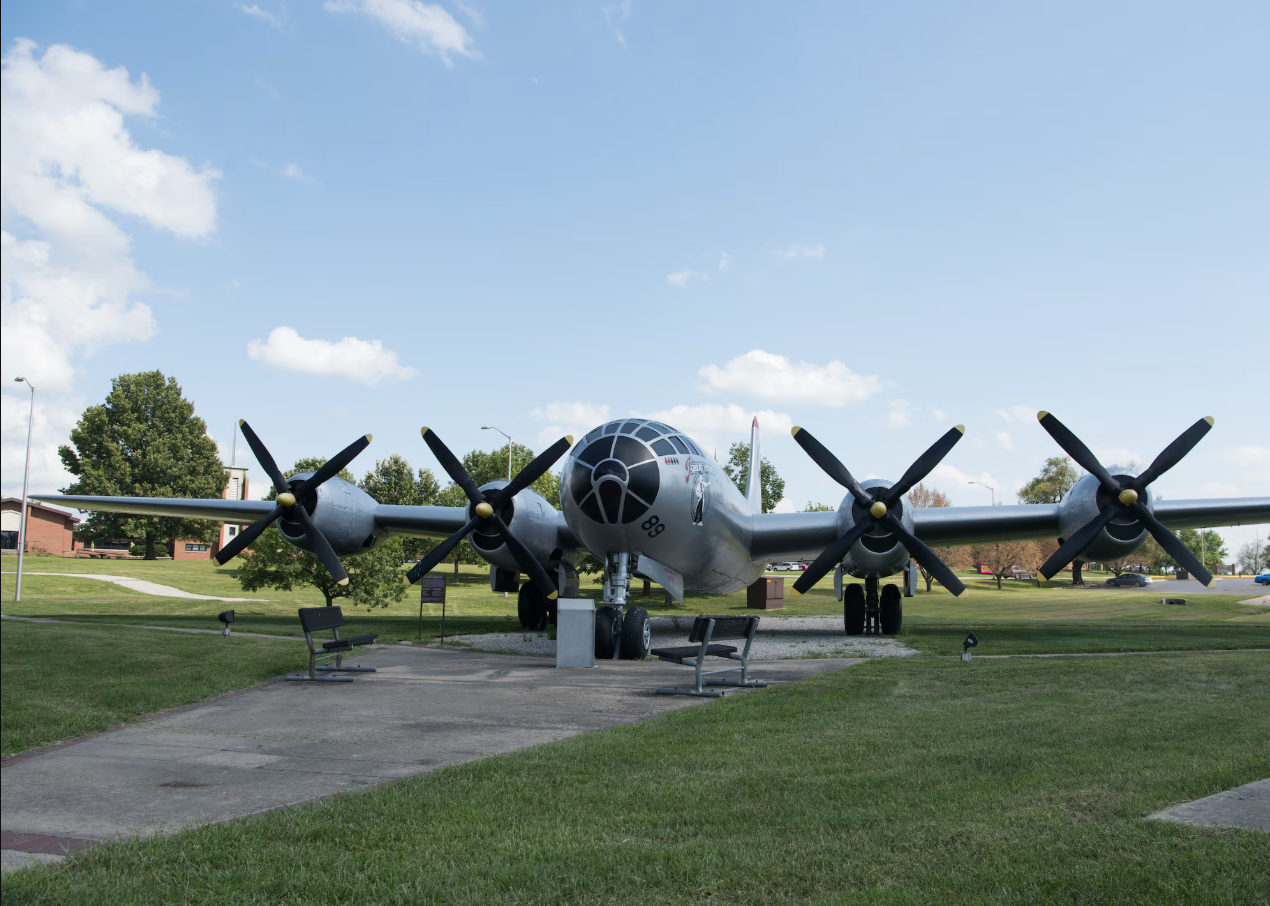
Outside the U.S.
There are two B-29s on display outside the United States. It’s Hawg Wild sits at the Imperial War Museum in Duxford, England. It flew 105 missions over North Korea and was then used as target in 1956 before being recovered and sent to its new home across the pond in 1980.
The other is at the UN Korean War Allies Association, flown disassembled from China Lake, California.
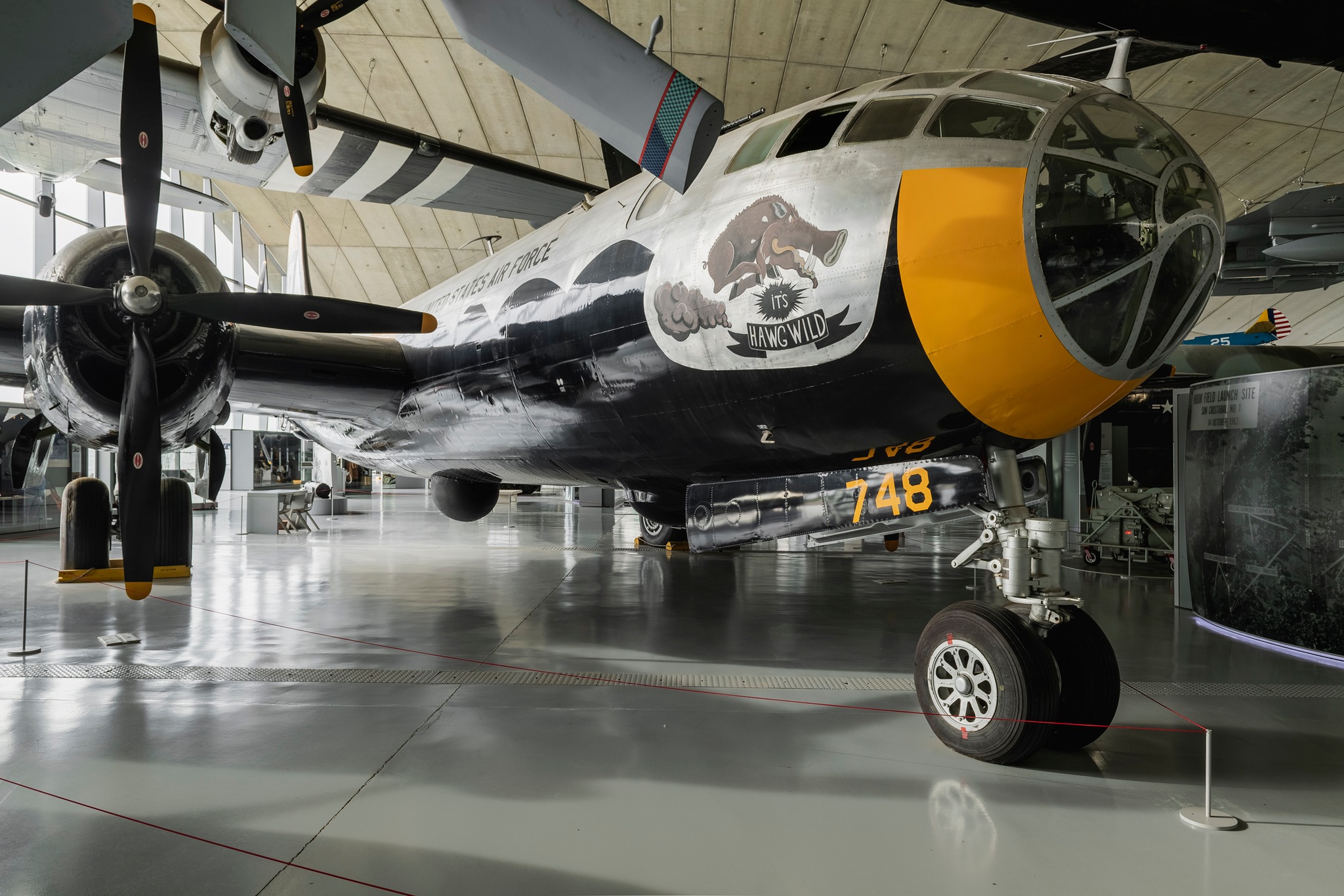
Flyable B-29s
FIFI may not have had the same decorated war career as other B-29s but it now serves a very important mission. It began as an administrative aircraft in 1945, then retired in 1958. In 1971 it was acquired by the Commemorative Air Force, used to preserve history and teach about the war. FIFI tours North America annually, participates in airshows, and offers rides. It has also appeared in multiple films in the 1980s and 90s. The American AirPower Tour offers rides and tours in FIFI and other World War II-era aircraft.
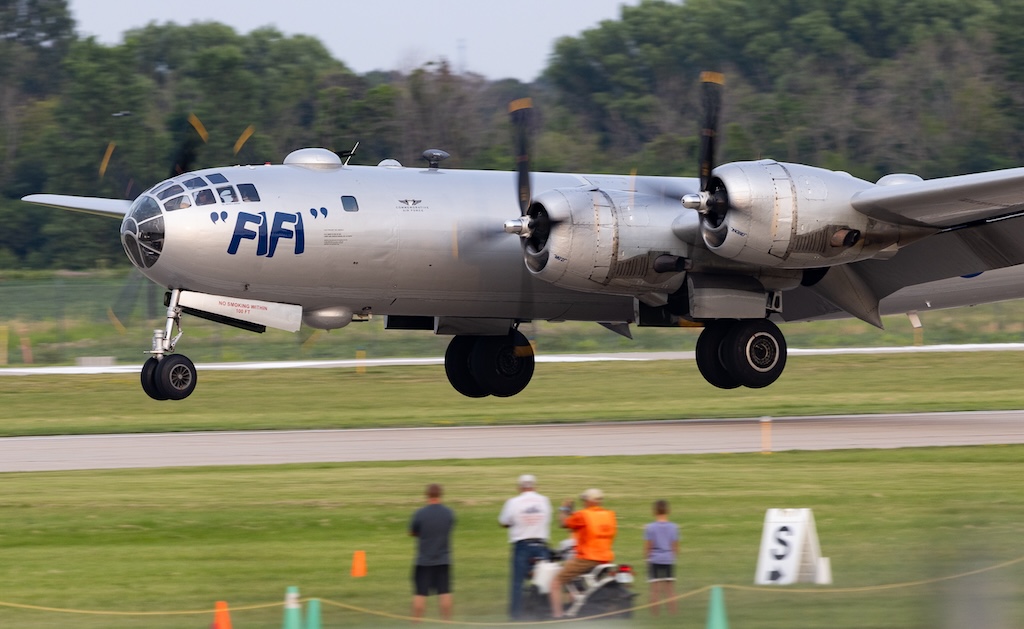
Doc, owned by Doc’s Friends, Inc and based in Wichita, Kansas was built in 1944. It did not see combat and was instead converted into a radar calibration aircraft. Doc was one of the aircraft used as ballistic missile target in China Lake, California before being retrieved. It was traded to an Air Force Veteran for restoration in exchange for a restored B-25 to be added to the National Naval Aviation Museum in 1998. It flew for the first time in 61 years on July 17, 2016. Since then, it’s appeared at various air shows including EAA AirVenture Oshkosh along with FIFI. Rides and tours are also available on DOC with the B-29 DOC Flight Experience.
